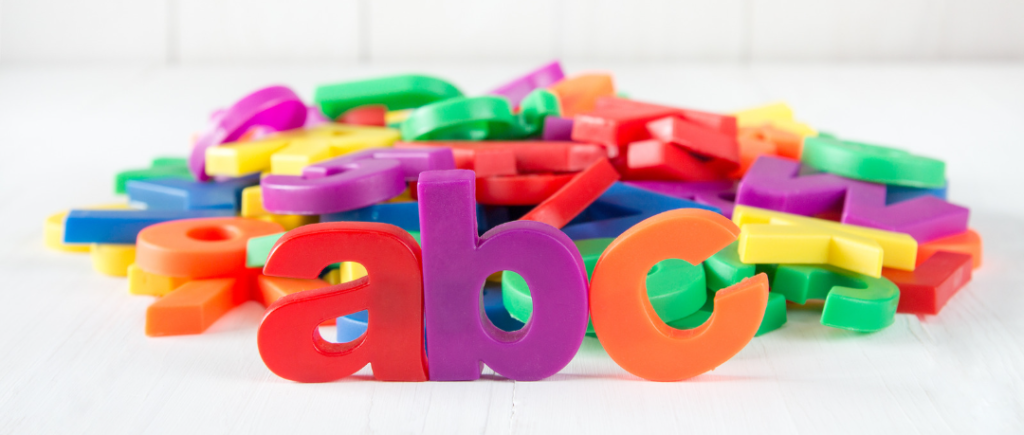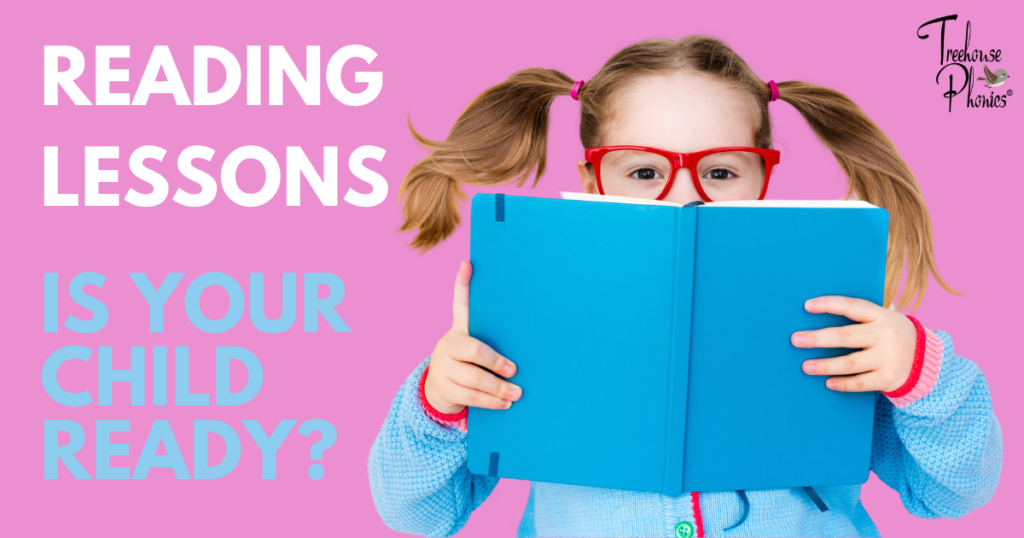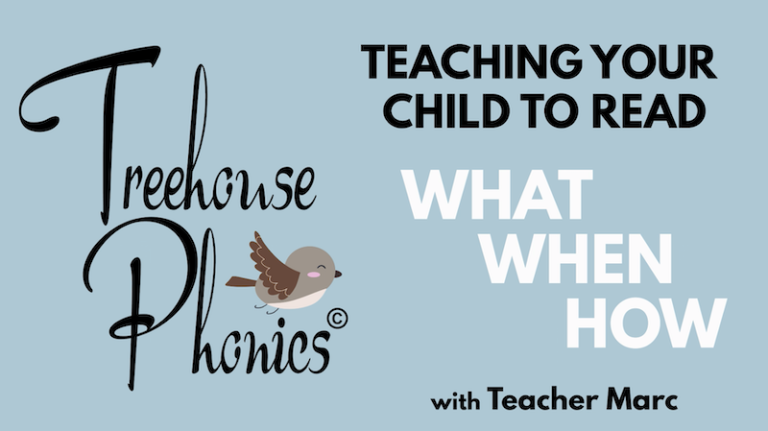When is your child ready to read? We will explore ways in which you can tell if your child is ready to start learning how to read.
Homeschooling parents may at times, come under the scrutiny of naysayers who claim that waiting until a child is ready to learn is irresponsible and that anything less than “fluency by 1st grade” is a tell-all sign of academic neglect or that their child must obviously be hindered by some form of learning disability. Strange, in a sense, that professional Early Years teachers are held less accountable when some of their students are entering high school almost illiterate! Maybe that’s why you’re homeschooling in the first place. Either way, this article no doubt sparked your interest because knowing when we can start teaching our children to read is something most parents are keen to find out.
Age Matters

Age matters, but not in the way we’ve been told. On one side, you have those who claim that because their children are reading as early as 3 years old, a new nationwide precedent has been set. Three is the gold standard of excellence? If your kid isn’t curled up in their favorite chair reading Pride and Prejudice by four years old, I would not declare this a tragedy in any sense. It becomes painfully clear that we cannot arbitrarily set a starting age and then judge anyone who falls shy of that goal. Yes, some are reading at three. Let the neighbors brag. So they’ve given birth to reading savant. Big deal. They are not you and THAT is ok.
What does matter is giving into the chatter of those ill-advised, yet well-meaning parents on social media who throw all caution to wind and tell you it’s ok if your child shows zero interest in learning to read up to 10 or 11 years old. The benefits of reading are so incredible that teaching someone to read should be viewed as a gift.
Sometimes a gift is not readily appreciated because the receiver has not grasped its true meaning or benefit. Do we wait until our children see another child get hit by a car before teaching them the importance of looking both ways before crossing the street? Do we wait until all their teeth rot and fall prematurely fall out of their mouth before showing them how to brush their teeth? Why are some people so lax about when a child should learn how to read? Most illiterate children and even adults will only experience the wisdom of strong reading skills when it’s too late. When they can’t even read a job application form or the warning label on a bottle of pills. We should be earnestly looking for signs that indicate when we can start to teach our child to read. So what can we look for?
Text Awareness

Knowing that words and letters exist in the first place is the simplest way to start. Are you a cat owner like me? Ever have a cat hop onto your lap and sit on a book while you’re reading it? Sometimes they lie across the keyboard on your laptop. They have no clue what a book is. Their furry little bodies lying across the keyboard have added some interesting new text to the email you were writing. Are they aware of any of it? Books, letters reading? They don’t have a clue and that is where their curiosity ends. Human curiosity is on a whole different plane of thought. Children will see books around the house, they will see text on a television screen. They will see your eyes move across the page as you read them from a book with colorful artwork. They SEE it but that doesn’t mean a whole lot until they start to ask you, “What is that?”. Are they showing interest in letters, words, and even road signs? Seeing something is one thing but being aware of it is a step higher. The gears of turning. They start to make the connection that you are looking at all that black ink on white paper and then saying stuff, and cool stuff too! They don’t realize at the moment that you are actively engaged in the act of reading but their interest in the letters, words, and sounds has sprung to life!
Books! What are they?

How do books work? Even a baby or toddler is beginning to understand how to open books and flip pages. Unfortunately, respect for books needs to be learned and this is why we don’t let them handle a leather-bound first edition of Moby Dick. Children will begin to understand that we can find stories inside books. They will begin to notice the direction you turn the pages. They will notice a front and back cover and that some books are soft or hardbound. We want to observe how they handle books and whether they mimic you holding a book correctly. Here is where we can escalate the process.
As you read to your child, have them switch from being passively entertained to actively participating. Let THEM hold the book. Let THEM turn the pages. As you read, run your finger across the words, and sooner or later they will notice the consistent left-to-right movement of each sentence. By now, I do not need to convince you that children observe everything you do and say. If you want your child to read, provide a fine example of your own reading skills each and every day. Read to your child as often as you can.
Letters and Sounds

Letter recognition is an integral foundation for reading. A sound, sometimes referred to as a phoneme can only be captured and cataloged in print form by pairing it up with a letter (known as graphemes) or group of letters. The absolute cornerstone of phonics is understanding the mapping of sounds (phonemes) to letters (graphemes). In order to do that, children need to first recognize the letters we are pinning the sounds to. You are no doubt singing the traditional ABC alphabet song with your child and this will help them remember that they are placed in a specific order and that each letter of the alphabet has a distinct name.
Some experts will tell you to hold off from teaching reading until they start to map a few sounds with letters and I do not agree. Even if your child has no phonics skills at all but is able to point to a few letters and tell you their names, you have grounds to consider formal instruction.
Of course, you can encourage and feed their interest in letter shapes and names with the use of plastic fridge magnet letters

and alphabet letter blocks. Start with one or two letters at a time and then move through the alphabet, helping them to identify each one through games and other fun activities. Help them see the letters in their own name. You would be surprised how this adds meaning to letters when they grasp the personal ownership of a select few in their own names. You may even point out that letters come in upper and lowercase but, if you have to make a choice? Upper or Lowercase? Please concentrate on lowercase letters first, as 90% of letters used in print are lowercase.

The Thrill Of It All!

There are entire curricula based on child-centered learning and the idea that when we let our children decide what they want to learn, they will soak in knowledge at a rate infinitely faster than when we force topics on them. Reading is too important to wait in hopes they find it exciting. Imagine waiting until your child is 10 years old before they decide whether reading is cool or not? If our children show little interest in reading by age five or six, we may need to look inward and ask ourselves if we have contributed to their lackluster attitude toward the printed page. Have they seen that reading is a chore for us? Have we ever grumbled when they asked us to read the same book over and over again? These are tough questions and no one is judging here but sometimes the only person to blame might be ourselves and that is a tough pill to swallow. This doesn’t mean that all is lost. Excitement can be rekindled when your child sees you enjoying a good book and you are bursting with enthusiasm while reading them the same book for the 40th time. They will pick up on it.

I once had a 3-year-old boy in my nursery class walk up to me and say “Mr. Marc. You know what? Taxes suck!” I’m pretty sure that boy wasn’t going to pay a dime in taxes for another decade or so but observing his parents and their openly vocal disdain of giving Ceaser’s things to Ceaser, this boy was convinced that taxes were evil.
It may take a little creativity on our part, but our sincere appreciation for books and literature will go a long way and children will eventually want to experience the same joy we get from an activity that may once have intimidated them or bored them to tears.
Summary
If your child is not reading at 3 years old, it’s not the end of the world. If they are not showing any interest by the age of 7, reading is too important to wait and we may have to take steps to invigorate them. We also want to see signs of text awareness, familiarity with books and how they are assembled as well as identifying letters and maybe some sounds, and most important of all, feel excitement about reading.

Once your child is ready to start reading, you’re going to what to make the greatest impact possible. Remember that Treehouse Phonics was specifically designed to help parents learn how to teach their child to read. Check it out today! All you lovely families out there, stay healthy and safe and never forget to read to your children each day!



